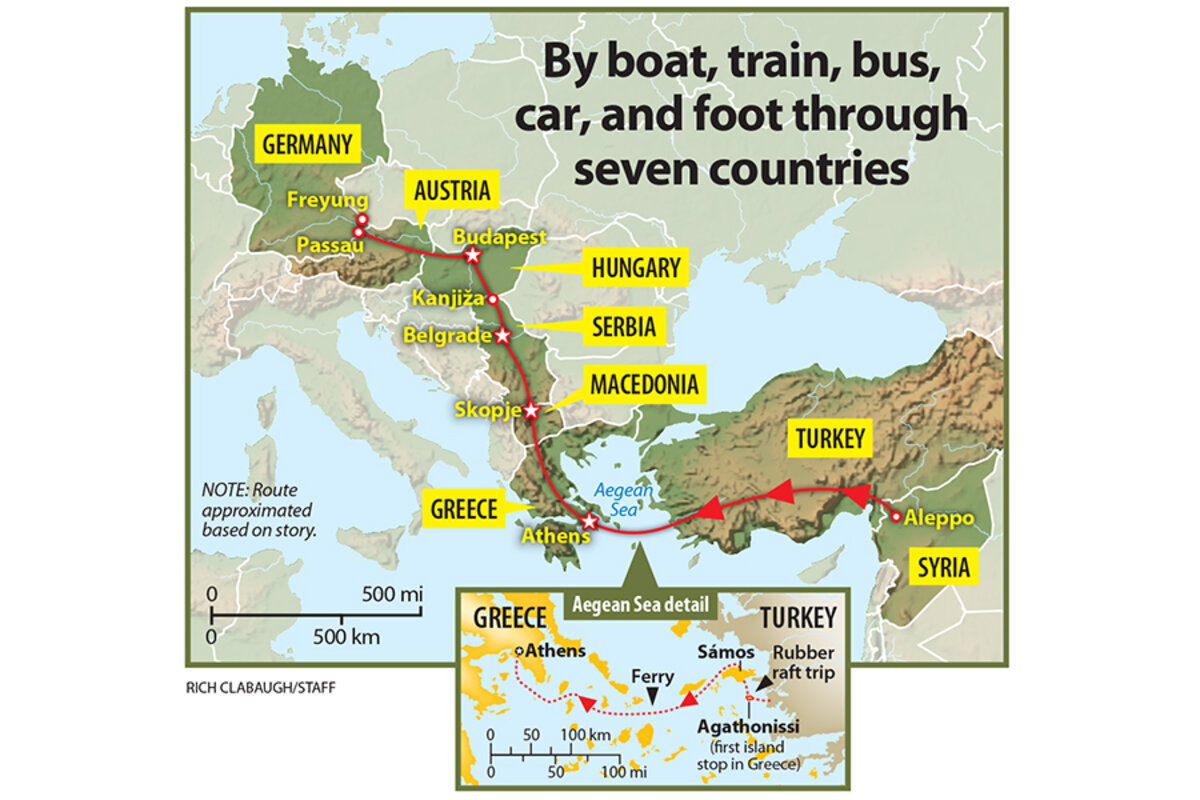Hungary's answer to burgeoning flows of refugees: a wall
Loading...
| Subotica, Serbia
At an abandoned brick factory here that has become a waystation for refugees and migrants trying to make it to Western or northern Europe, Ayoub is waiting for his chance to cross the border into Hungary.
The 18-year-old Afghan, who gave only his first name, has been traveling overland for a month, from his home in Nangarhar Province. He left his village because the Taliban made life difficult and dangerous there, and he hopes to make it to Belgium, where he has relatives.
Crossing into Hungary, within the European Union's border-control-free area, is a crucial step in his journey.
But Hungary is now building a fence in an attempt to keep people like Ayoub out. The obstacle is Hungary’s answer to the explosion in the number of refugees and migrants traversing the Balkans to reach Europe this year. According to the International Organization for Migration, more than 90,000 migrants and refugees have arrived by sea to Greece so far in 2015, and many of those arrivals continue north through Macedonia, Serbia, and Hungary on their way to Germany, Sweden, or elsewhere in Europe. This is now one of the most-trafficked migration routes to Europe.
Yet it’s not clear whether Hungary’s fence will change that. Many such fences elsewhere have failed to stop migrants, and this one is not particularly daunting. Even if it does decrease the number of irregular crossings into Hungary, it will not stop the flow of people heading to Europe: Refugees and smugglers will simply find another route, as they have done before.
“We crossed a lot of walls. We will cross also this one,” says Ayoub, with a good-natured laugh, when asked if he worried the fence would block the way for refugees. He already crossed the fence on Bulgaria’s border with Turkey, with just a rip to his trousers. As for the razor wire on Hungary’s fence – that is no problem, he says. “If it’s sharp we put a blanket on it.”
Hungary not alone
A half-hour drive away, Hungarian soldiers are working on the fence. Amid fields of corn and sunflowers, they are erecting a steel frame covered in 13-ft.-high metal mesh. At the top and bottom are coils of razor wire. Just 558 feet of the fence were completed by the last week of July, according to a military officer on the site. But Hungary’s Prime Minister Viktor Orbán said last month the fence would be completed, across Hungary’s entire 106-mile border with Serbia, by the end of August. The short completed section is between the two most highly trafficked crossing points, and so far has not affected the passage of migrants going north.
Mr. Orbán has made clear that refugees and immigrants are not welcome in Hungary, associating them with terrorists and calling them a threat to Europe and Hungary. So far this year, Hungary has registered more than 101,000 asylum seekers, according to the Office of Immigration and Nationality. But nearly all of them leave the country soon after lodging their applications, intent on making it to countries more welcoming to refugees and with better employment opportunities.
Hungary is not the only country in the region to build a border fence. Greece and Bulgaria both built barriers along parts of their borders with Turkey in response to increased numbers of irregular crossings.
Both saw numbers decrease. But that wasn’t simply due to the fences, says Izabella Cooper, spokeswoman for the EU border agency Frontex. Both countries also increased the number of border patrol officers, and Turkey increased control of its side of the frontier.
And other factors contributed, such as national migration policies like increased detention capacity and extended length of detention, Ms. Cooper says. Both Bulgaria and Greece have been criticized for illegal pushbacks of asylum seekers on their borders, and Greece this year began reforming its highly criticized immigration policy, under which many asylum seekers were detained.
The 'squeeze'
Managing "migratory flows is very much like squeezing a balloon,” says Cooper, noting that when authorities strengthen border control in one place, the flow doesn’t stop – it only shifts. “Border control is not a panacea for the management of the migratory flows and only a more global approach can work,” she says, including stabilizing countries producing refugees, increasing cooperation among transit countries to disrupt smuggling networks, implementing a common European approach to immigration and asylum policy, and providing legal channels for refugees to enter the EU without embarking on a difficult journey.
Without such changes, people like Ayoub are left to navigate a dangerous trek to safety, often at the mercy of smugglers and corrupt police. “There is war in Afghanistan, Iraq, and Syria. That’s why we’re coming,” he says. “We are refugees.”
At the same squalid camp, Haidar, a geography teacher from Iraq, says he brought his wife and three small children here to escape violence in Baghdad. In Bulgaria, he says police stole $5,000 from him, and he now relies on charity as he tries to make it to Germany. He had not heard about Hungary’s fence, but he isn’t surprised by it.
“All these countries came to Iraq and destroyed it. They are the cause of our problems, and now they want to keep us out,” he says. “They’ve lost their humanity. To them, we are no better than animals.”







